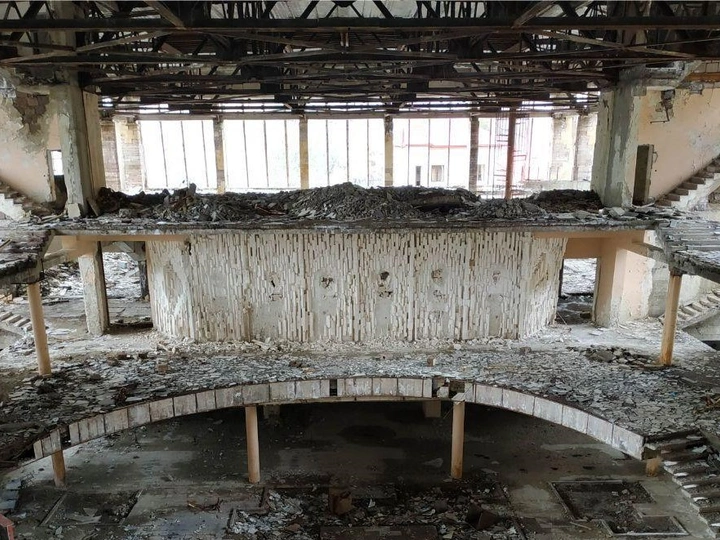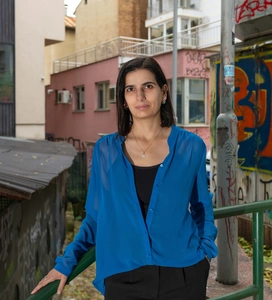Architecture։ Ghostly Past and Unrevealed Present

Sona Hovhannisyan
Sona Hovhannisyan is a curator and art critic living in Armenia. She is co-founder of the ToC (Triangle of Collaboration) creative hub, which aims to connect art professionals of three disciplines. She is committed to developing innovative collaborations that engage the community, artists, and art professionals from all over the globe.
Sona graduated from the Department of History and Theory of Fine Arts at the Yerevan State Academy of Arts (2010) and over fourteen years, her dedication lies in curating projects that delve into the exploration of space, acting as a medium to blend diverse art forms and foster a range of perspectives in collaboration with architects, sculptors, artists, musicians, and choreographers, both locally and internationally. She was a curator of exhibitions such as the renowned German artist Otto Dix’s "Social Criticism 1920–1924" (Yerevan, 2023), Third and Fourth International Print Biennale Yerevan (2021, 2023), Armenian renowned photographer Gagik Harutyunyan’s "In the Heart of Instant" together with a well-known German artist Jurgen Middelmann (History Museum of Armenia, Yerevan, 2022), etc in cooperation with architects and architectural studios. Also, she participated in a cross-disciplinary project “Body Practices: Post Revolutionary Armenia”(2019) where she was interested in an exploration of urban places in the context of performing art. Furthermore, she studies and researches the architecture and particular abandoned buildings of soviet modernism and truly believes that multidisciplinary cooperation can reveal different perspectives on architecture.
The project initiates to redefine the concept of abandonment through the very simple idea: every building is somehow abandoned until there is nobody to enter, move or speak. We want to transform neglected spaces into vibrant artistic canvases and bring new life and meaning to these forgotten environments, so contemporary dance and sound art within the captivating setting of the former Palace of Culture in Jermuk became the experimental tool for implementation.
The project is a collaborative effort of curator, performers, choreographers, artists, filmmakers, and local community members. Extensive planning goes into conceptualizing the dance performances that would resonate with the history and atmosphere of the Palace of Culture. Filmmakers will work closely with the creative team to capture the essence of the performances and the unique character of the space. One of the most successful aspects of the project is the integration of contemporary dance into a non-traditional setting, creating a powerful juxtaposition between movement and abandoned architecture. The performance will bring emotional depth and narrative to the neglected space, not only engaging audiences in a profound exploration of abandonment but also redefining the dance itself as a natural movement that plays a significant role in keeping architecture alive. The project aims to have a significant impact on both participants and audiences. The documentary film served as a lasting testament to the transformational power of art in reimagining neglected spaces and challenging perceptions of abandonment. Looking ahead, the project could evolve into a series of site-specific performances and documentaries that explore other abandoned or underutilized spaces in Armenia, and why not around the world as well. This approach could continue to highlight the potential of cross-disciplinary art collaboration to redefine and reclaim neglected environments, fostering dialogue and inspiration in communities globally.
